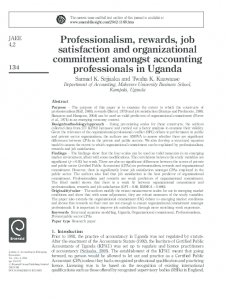Content
On those sales, $34 of sales tax was collected, adding up to a total of $716 of cash receipts from your customers. Record the cash receipt transaction Your cash receipts journal should have a chronological record of your cash transactions. Using your sales receipts, record each cash transaction in your cash receipts journal. Do not record the sales tax you collected in the cash receipts journal. The DR Other column would be handled a little differently as you need to look to the account column to find out where these individual amounts should be posted. In this case, we would post a $200 debit to merchandise inventory and a $300 debit to utility expense.
- Each transaction is documented with its date, description, invoice number , and the amount received in the cash account column.
- You might have one column labeled “Parts and Supplies Sales” and another labeled “Service and Repair Revenue.” This could provide you with more meaningful information.
- When many think of a typical cash receipts journal, they think of simply keeping track of cash flow in a business, but these journals can serve many more purposes as well.
- Clarify all fees and contract details before signing a contract or finalizing your purchase.
- The cash receipts journal is used to record all transactions that result in the receipt of cash.
The cash receipts journal is used to record all transactions that result in the receipt of cash. This includes receipts from customers, debtors, and other sources. At the end of the month, the different columns in the cash receipts journal are totaled. The totals from all the amount columns are posted to the appropriate general ledger accounts. The debit columns in a cash receipts journal will always include a cash column and, most likely, a sales discount column. Other debit columns may be used if the firm routinely engages in a particular transaction.
What is a common error made when posting entries from a cash receipts journal?
When a retailer sells merchandise to a customer and it collects cash, this transaction is recorded in the cash receipts journal. The following example illustrates how a cash receipt journal is written and how entries from this journal are posted to relevant subsidiary and general ledger accounts. A cash receipt in accounting serves as backup documentation for cash transactions recorded in cash receipt and payment journals. Other (Cr.) – the amount of the cash received for reasons other than direct sales or A/R.
- Our mission is to empower readers with the most factual and reliable financial information possible to help them make informed decisions for their individual needs.
- If credit card and/or ACH payment processing is enabled in Company Maintenance and entries with unauthorized credit card or ACH transactions exist, you are prompted to process the transactions.
- To make sure you have cash receipt accounting down pat, check out the examples below.
- You must also track how these payments impact customer invoices and store credit.
- Stay updated on the latest products and services anytime, anywhere.
- Consult the support desk at Viewpoint for instructions to correct an out-of-balance error.
However, you will not need to post the total for the sundry account. It is essentially the same as the other column on the debit side, with the exception that instead of an account name sub-column, it has a Ref. column for account numbers. Sales (Cr.) – the amount of the sale, if it’s a direct sale and not previously recorded in A/R. Purchase Journals – used for all merchandise purchases on an account.
What Happens If You Lose Track of Cash Receipts?
In the subsidiary ledger, the post reference is “CR-8”, which indicates that the entries came from page 8 of the cash receipts journal. The credit columns in a cash receipts journal will most often include both accounts receivable and sales. Again, other columns can be used depending on the type of routine transactions that the firm engages in.

It consists of three components – credit analysis, credit/sales terms and collection policy. None of the individual amounts in the cash and sales columns are posted. Balanced entry protection is incorporated into this function to ensure the General Ledger will stay in balance.
Cash Receipts Journal Voucher with Summary Form
If you will be using computer software, you probably won’t have to decide which type of journal to use. Your program will probably have some type of sales and cash receipts journal, but may allow you to customize it based on your type of business. Cash receipt journals are not for transactions such as credit sales and debit but are meant for cash payments only.

For example, cash receipts from capital investments, bank loans, and interest revenues are generally recorded in this column. Any non-standard cash receipt is listed here and the description/ account affected goes in the account column. If you lose one or more cash sales receipts, it may be difficult to have an accurate balance sheet because the cash account will be incorrect. An inaccurate balance sheet the cash receipts journal will be used for can lead to underestimation of business expenses and inflation of profit and revenue. This can be financially damaging to your business due to potential overspending and overestimating cash flow among other issues. The only disadvantage of a Cash receipts journal is that it is based on cash accounting, since it records transactions when cash is received regardless of when a service is rendered.
Cash Receipts Journal Definition
Next, you’ll take the total of the sales column and post it to the general ledger in the cash account as a debit. You’ll find there are different possible formats you can use for your cash receipts journal, and the one you should use really depends on the needs of your business. Because it is clear that this is a cash sale from other columns, there is no need to make a separate entry into the accounts credited column.
It ignores the accrual system of accounting which is the basis of the double entry bookkeeping system. A cash receipts journal helps in preparing other ledger accounts such as cash flow statements. Your cash receipts journal should have a chronological record of your cash transactions. Other sources of cash often include banks, interest received from investments, and sales of non-inventory assets.
What is a cash receipts journal used for quizlet?
A special journal used to record all transactions in which cash is received.

